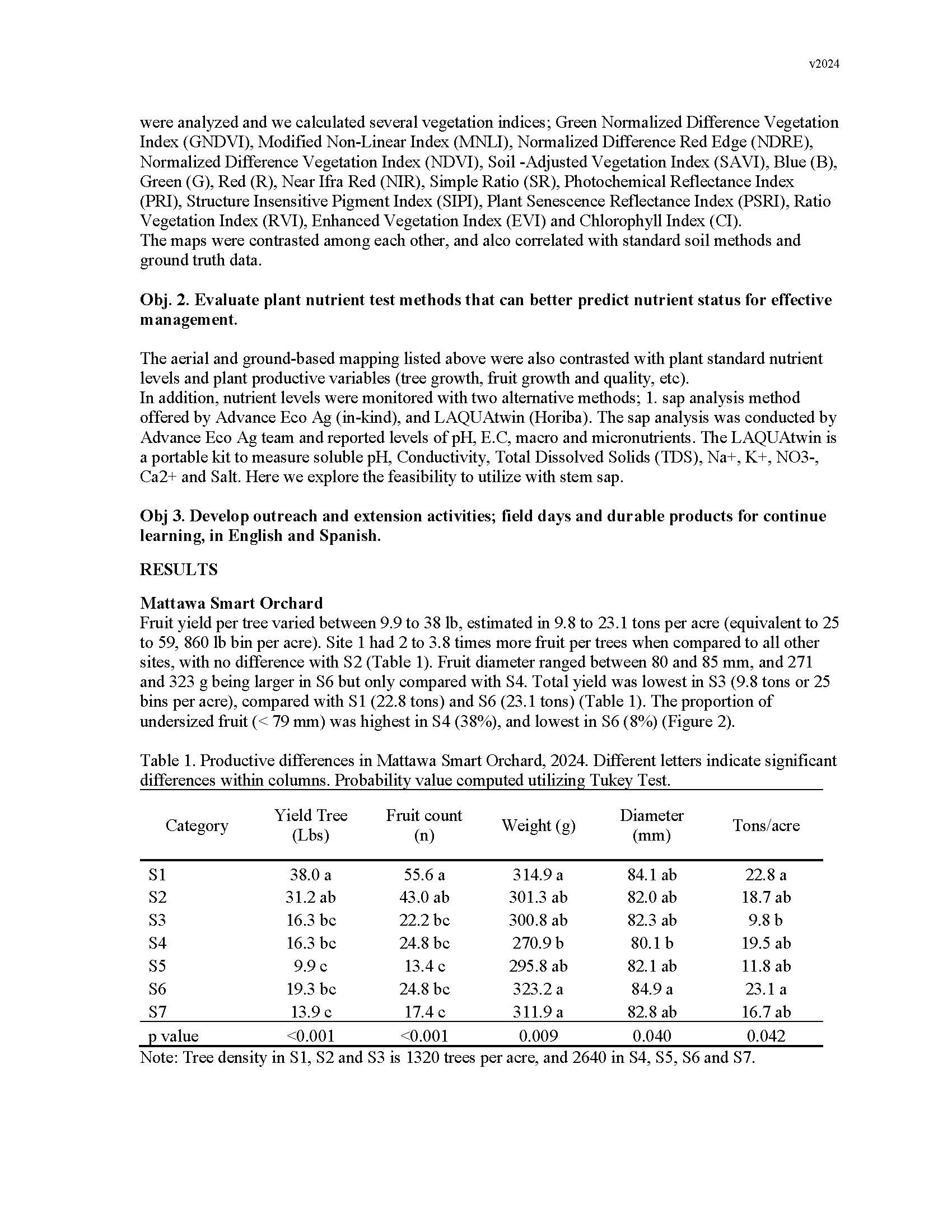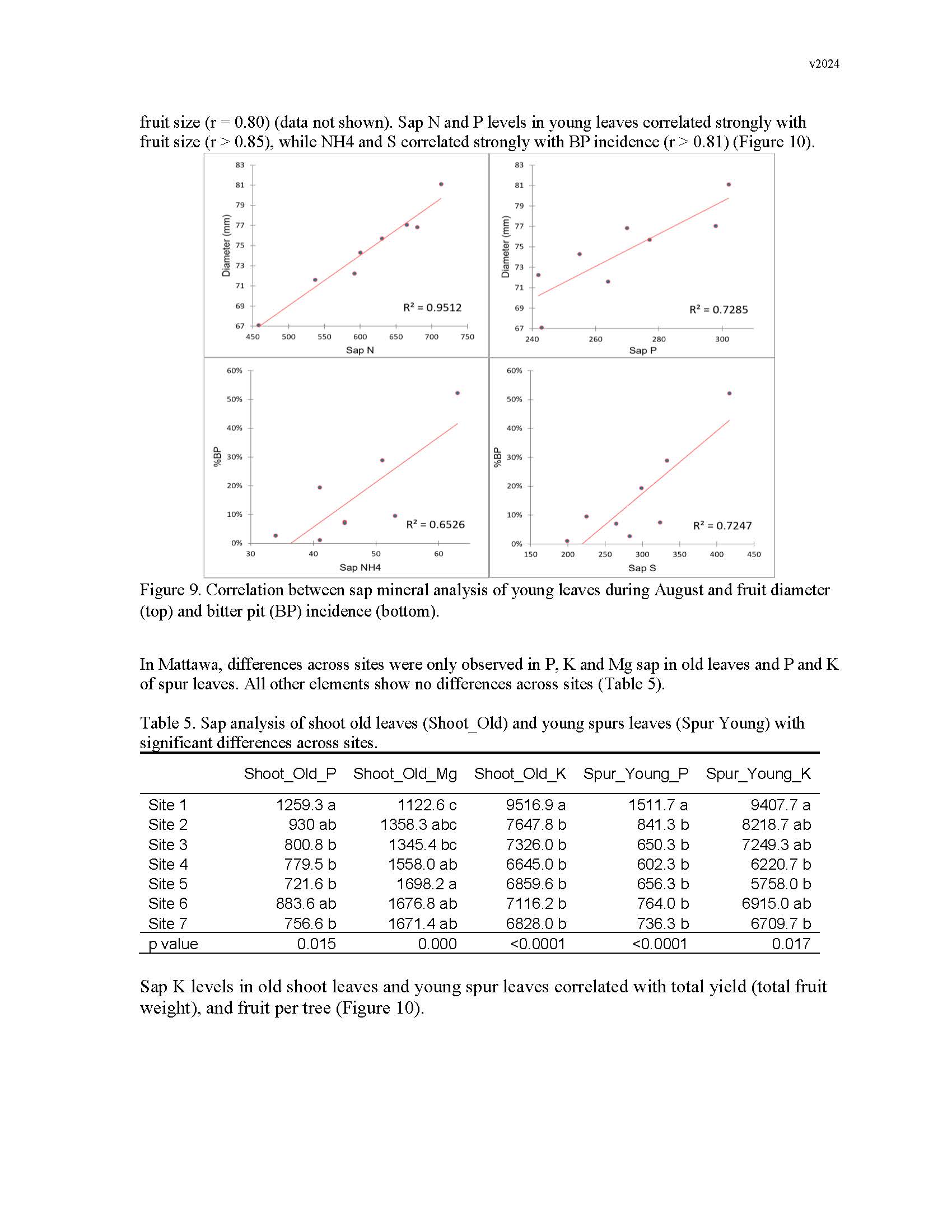Soil and Plant Diagnostic Technology for Smart Nutrient Management
Author: Bernardita Sallato C.
Published: 2025
Summary: Effective nutrient management in tree fruit production requires a comprehensive understanding of multiple interacting factors, including soil conditions (physical, chemical, and biological), plant health and demand, water availability, and environmental conditions. Current methods like soil and plant tissue testing, standardized by the Soil Science Society of America (SSSA), remain underutilized among growers due to a perceived lack of correlation between test results and outcomes in crop growth, yield, and quality. Growers and service providers are exploring new technologies to better predict plant nutrient status and inform management practices. In 2023 and 2024, we evaluated new and existing nutrient management tools across two orchards: A commercial ‘Honeycrisp’ orchard near Grandview in 2023, and a ‘WA 38’ orchard near Mattawa in 2024. Technologies deployed included advanced mapping tools: SoilOptix, E.C. mapping, satellite imaging, and unmanned aerial system (UAS) data products. Derived data was correlated with plant nutrient levels and productivity parameters (e.g., tree and fruit growth, fruit quality). Additionally, two alternative nutrient monitoring methods—sap analysis (Advance Eco Ag) and LAQUAtwin (Horiba)—were tested. SoilOptix mapping, though useful, requires additional calibration for reliable nutrient management recommendations. It demonstrated strong correlations for calcium (Ca) across both sites and years, and for sulfur (S), magnesium (Mg), boron (B), and sand in two of the three orchards. Tools such as SoilWeb Survey, Google Earth, and UAS also aided in guiding sampling decisions. Leaf nutrient levels showed correlations with productivity metrics like fruit count, weight, yield, and disorders. However, these correlations varied by cultivar and site. In Honeycrisp, low nitrogen (N) was linked to smaller fruit size, given the site was overcropped. In WA 38, higher N levels were associated with green spot and higher shoot growth, given the block is young and still filling the space. UAS imaging data revealed useful correlations with nutrient levels. Positive correlations between leaf N% and NDRE, and Ca% with NDVI. And negative correlations between Fe% with RDVI and SAVI. These findings suggest that UAS imaging data could support variable-rate nutrient application for micronutrients. Sap nutrient correlations varied by orchard: For example, in Grandview: Mg, NH4, and Mo levels in sap correlated with crop load; N, P, and Ca correlated with fruit size. In Mattawa: Sap K levels correlated with fruit count and yield. The LAQUAtwin portable kit did not yield reliable results for nutrient diagnostics. Precision nutrient management in apple orchards demands a holistic approach, integrating diverse data sources and insights into plant physiology, soil chemistry, and environmental interactions. Standard soil and tissue testing remain valuable but require context-specific understanding for optimal use. While mapping technologies and UAS imaging provide new opportunities to assess nutrient variability, further refinement is needed to enhance precision and develop actionable recommendations for variable rate nutrient application.
Keywords:














